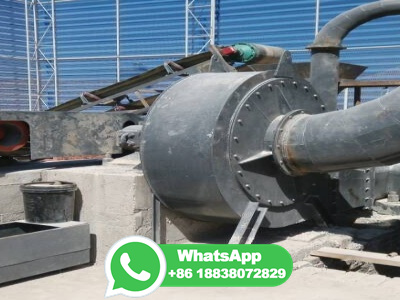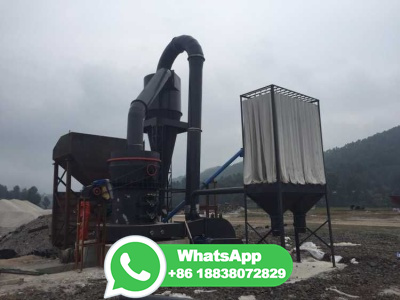
Iron ore provides the base iron needed for stainless steel production. The iron is extracted from the ore through various processes, as discussed earlier. Once the iron is obtained in its pure form, it is combined with other elements to create the desired stainless steel alloy.
WhatsApp: +86 18203695377
Raw material. Iron and Steel industry uses a large quantity of heavy and weight losing raw material, so its location is primarily guided by the availability of raw material. Most of the iron and steel plants of India such as Jamshedpur, Burnpur, Durgapur, Rourkela, Bhilai, and Bokaro are located in Jharkhand, West Bengal, Orissa and Chhattisgarh.
WhatsApp: +86 18203695377
The basic raw materials for making iron and steel are: Iron ore Iron ore is one of the basic among other raw materials used in the production of iron. It is described as any mineral substance that contains enough iron which makes its smelting a viable proposition, an iron content of less than 20%.
WhatsApp: +86 18203695377
The move came after the NDRC issued two warnings on reinforcing the supervision on the iron ore market in the past week to curb a price rally. Prices have gained around 30% since August on ...
WhatsApp: +86 18203695377
Raw materials are processed at Scunthorpe's sinter plant, which forms an ironrich feedstock for the blast furnaces. The ingredients iron ore, coke and limestone fines are carefully stacked and blended, then passed under an ignition hood at the sinter plant. ... When the oxygen blowing process is complete, the steel is poured or ...
WhatsApp: +86 18203695377
There are two types of the modern steelmaking process: Primary Steelmaking This process chiefly utilizes new iron samples as the feedstock from a blast furnace. Secondary Steelmaking The ...
WhatsApp: +86 18203695377
Iron orebearing material and metallurgical coal is typically and most economically delivered to steelmaking sites by large, oceangoing ships. When ships arrive, raw materials are unloaded using huge cranes with opening jaws that grab the raw material from the hold of the ship and then deposit it in huge piles. Steel plants that are situated inland need to bring raw materials in by land ...
WhatsApp: +86 18203695377
All steel is made using raw iron. As previously mentioned, steel is characterized by the presence of iron and carbon. The ratio of these two elements varies depending on the specific type of steel being made. With that said, most types of steel contain about 1% carbon and 97% iron, with the remaining 2% consisting of trace elements and ...
WhatsApp: +86 18203695377
Iron ore is, therefore, essential for the production of steel, which in turn is essential in maintaining a strong industrial base. 98% of mined iron ore is used to make steel. Iron ore is mined in about 50 countries. The majority of iron ore is mined in Brazil, Australia, China, India, the US and Russia.
WhatsApp: +86 18203695377
Rajasthan. Iron Ore for internal consumption and export would be milliontonnes and million tonnes respectively. Production and despatches of Iron Ore from 199596 to are given below: (Quantity million tonnes) (Value rupees in crores) Year/Period Production Despatches Qty. Value Total For Internal Consumption For Exports
WhatsApp: +86 18203695377
Iron Ore: Since DRI making is a solidstate reduction process, the gangue in the ore is retained in the product. Due to oxygen removal, there is a reduction in weight by about 30% and the percentage of gangue material goes up by about times. Hence, it is very important to choose a higher grade of iron ore input.
WhatsApp: +86 18203695377
The iron and steel industry currently sells the slag byproduct for use as an aggregate, filler or raw material in readymixed concrete, concrete products, asphaltic concrete, roadway materials, construction fill, clinker, railroad ballast, roofing, mineral wool insulation and soil conditioners.
WhatsApp: +86 18203695377
Iron. During the ironmaking process, a blast furnace is fed with the iron ore, coke and small quantities of fluxes (minerals, such as limestone, which are used to collect impurities). ... Steel is an essential material for modern life and global steel production is dependent on coal 70% of steel produced uses coal. Global Alliance;
WhatsApp: +86 18203695377
Basic raw Materials. The basic raw materials needed for making steel in the BOF converter include (i) hot metal from the blast furnace, (ii) steel scrap and/or any other metallic iron source, (iii) iron ore, and (iv) fluxes. Scrap, charged from a scrap box, is the first material to be charged into the BOF. The hot metal is then poured into the ...
WhatsApp: +86 18203695377
Sintering is a thermal agglomeration process that is applied to a mixture of iron ore fines, recycled ironmaking products, fluxes, slagforming agents and solid fuel (coke). The purpose of the ...
WhatsApp: +86 18203695377
A shortage of highquality iron ore in the marketplace presents a significant hurdle for steelmakers who are trying to reduce their carbon emissions. Green hydrogenbased technologies use less carbon to produce steel, but the process requires higher iron ore grades than traditional blast furnaces. A dearth of ore with an iron content above 65% ...
WhatsApp: +86 18203695377
Carbon Impacts of Steel. Steel is made with a mix of raw primary materials (ore) and recycled materials (scrap steel). Primary steel is made by processing ore in a blast furnace/basic oxygen furnace (BOF) system, or in a directreduced iron (DRI) plant. BOFs burn coke, a coalbased fuel, to chemically reduce iron ore at high temperatures (up to ...
WhatsApp: +86 18203695377
Order my new children's book on Amazon! Orville the Iron Ore on Amazon: https:///2IXVkFiSteel and iron is an essential part of our everyday life. It m...
WhatsApp: +86 18203695377
Fact sheet Steel and raw materials © NLMK In 2021, it is estimated that the global steel industry used about billion tonnes of iron ore, billion tonnes of metallurgical coal and 680 million tonnes (Mt) of recycled steel to produce billion tonnes of crude steel1.
WhatsApp: +86 18203695377
Iron ore is the primary raw material from which metallic iron is extracted to make steel. To meet the rapid increase in crude steel production, the last decade has seen major expansions in world iron ore production. As evident in Figure, the world's iron ore production has increased from Bt in 2001 to Bt in 2012.
WhatsApp: +86 18203695377
The Study Offers a Detailed Cost Analysis of Iron Ore Production Process. In Addition, the Report Incorporates the Manufacturing Process With Detailed Process and Material Flow, Operating Costs Along With Financial Expenses and Depreciation Charges. Details: Germany based plant Q2 2023 From USD.
WhatsApp: +86 18203695377
The common raw material for iron and steel industry is iron ore. The primary raw material used to manufacture steel is iron. All steel alloys are primarily iron and % carbon by weight. Iron ore, coke and calcite (lime) are added to a blast furnace to produce molten iron. This iron is used as the raw material for steel manufacturing ...
WhatsApp: +86 18203695377
Geopolymers and Other AlkaliActivated Materials. John L. Provis, Jannie van Deventer, in Lea's Chemistry of Cement and Concrete (Fifth Edition), 2019 NonBlastfurnace Slag Precursors. Steel production, from iron and/or recycled scrap, is a multistage process which results in the production of a variety of of these slags contain hydraulic or latent hydraulic ...
WhatsApp: +86 18203695377
Iron ore is the raw material used to make pig iron, which is one of the main raw materials to make steel —98% of the mined iron ore is used to make steel. [2]
WhatsApp: +86 18203695377
Iron and Steel Industry. Iron is the primary raw material used to produce steel — itself an alloy of concentrated iron with a minute amount of carbon. Operator using an oxygen lance to clean out the ladle at the continuous casting facility, Stelco Hilton Works, Hamilton (courtesy Stelco Hilton Works). Iron is the primary raw material used to ...
WhatsApp: +86 18203695377
There are four stages involved in the production of iron ore pellets. These stages consist of (i) raw material preparation, (ii) formation of green balls or pellets, (iii) induration of the pellets, and (iv) cooling, storage and transport of pellets. Raw material preparation During the process for pelletization iron ore concentrate from ...
WhatsApp: +86 18203695377
The process of sintering is basically a pretreatment process step during iron making for the production of the charge material called sinter for the blast furnace from iron ore fines and also from metallurgical wastes (collected dusts, sludge and mill scale etc.). The sintering technology was originally developed for the purpose of utilizing ...
WhatsApp: +86 18203695377
The sinter plant turns iron ore into sinter, which is the optimal product for the blast furnace. Sinter is made by burning a mix of iron ore powder, fluxes and recycled substances from the steel plant to create an opengrained, consistent substance. The sinter is then crushed, cooled and screened for dust. Sometimes, iron ore is supplied in the form of iron ore pellets.
WhatsApp: +86 18203695377
The Flow of Raw Materials. The production of steel requires various raw materials such as coal, coke, iron ore, flux, mill scale, sinter etc. and they undergo processes like unloading, stacking, reclaiming, blending, crushing, grinding and screening and are finally conveyed to the sinter plant, coke oven battery and blast furnace.
WhatsApp: +86 18203695377
The oxygen furnace is the most widely used method for making steel. In this method, the intermediate product, pig iron, is combined with steel scrap, usually under 30%, as well as a small amount of flux. Oxygen is blown into the furnace which increases the temperature to over 1700°C. The pressurised oxygen reacts with the high levels of carbon ...
WhatsApp: +86 18203695377
They also found that the nuclei particles can improve the granulation performance due to their surface area. Liu et al. [6] studied granulation and agglomeration process of three iron ore raw materials (specularite, magnetite and limonite), and found that specularite has a highwater absorption rate and limonite has a good pelleting performance.
WhatsApp: +86 18203695377
Ironmaking; This is the first step in the manufacturing of pure steel. In this step, the raw materials like iron ore, coal and lime are melted in a blast furnace. This results in the formation of molten iron, also known as hot metal, which still contains % of carbon and other impurities, which makes it brittle. These have to be ...
WhatsApp: +86 18203695377
Global CO 2 emissions from steel production from the different manufacturing routes are estimated to be 3169 Mt from approximately 1781 Mt of steel production by 2020, whereas the specific energy consumption is estimated to be GJ/tcs.
WhatsApp: +86 18203695377